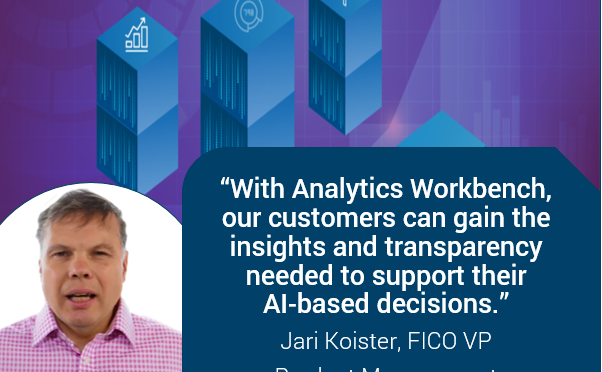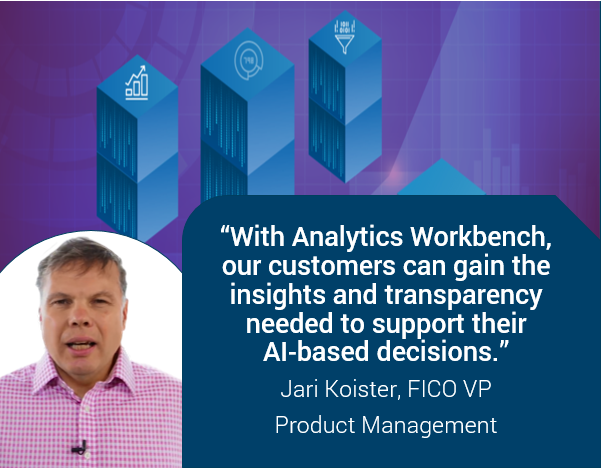How to Make Artificial Intelligence Explainable
Blog: Enterprise Decision Management Blog

How to Make Artificial Intelligence Explainable – A New Analytic Workbench
FICO today announced the latest version of FICO® Analytics Workbench™, a cloud-based advanced analytics development environment that empowers business users and data scientists with sophisticated, yet easy-to-use, data exploration, visual data wrangling, decision strategy design and machine learning.
As new data privacy regulations shine a spotlight on AI and machine learning, the FICO Analytics Workbench xAI Toolkit helps data scientists better understand the machine learning models behind AI-derived decisions.
“As businesses depend on machine learning models more and more, explanation is critical, particularly in the way that AI-derived decisions impact consumers,” said Jari Koister, vice president of product management at FICO. “Leveraging our more than 60 years of experience in analytics and more than 100 patents filed in machine learning, we are excited at opening up the machine learning black box and making AI explainable. With Analytics Workbench, our customers can gain the insights and transparency needed to support their AI-based decisions.”
How to Make Artificial Intelligence Explainable – Avoiding the Common Pitfalls
“Computers are increasingly a more important part of our lives, and automation is just going to improve over time, so it’s increasingly important to know why these complicated AI and ML systems are making the decisions that they are,” said AI expert and assistant professor of computer science at the University of California Irvine, Sameer Singh. “The more accurate the algorithm, the harder it is to interpret, especially with deep learning. Explanations are important, they can help non-experts to understand the reasons behind the AI decisions, and help avoid common pitfalls of machine learning.”

Built for both business users and data scientists, the FICO® Analytics Workbench™ combines the best elements of FICO’s existing data science tools with several open source technologies, into a single, cloud-ready, machine learning and decision science toolkit, powered by scalable Apache Spark technologies. The Analytics Workbench provides seamless and automated regulatory audit compliance support, producing the necessary documentation for internal review and external regulators.
The Analytics Workbench has been designed for users with a variety of skill sets, from credit risk officers looking for a consistent tool to data scientists and business analysts collaborating and working together to inform and enrich strategic decision making. With an intuitive interface, users can expect faster time-to-value, higher levels of productivity, and significant business improvements through analytically powered decisions.
How to Make Artificial Intelligence Explainable – See Our Demo
For more information, click here.
For a demonstration of analytics workbench, click here.
The post How to Make Artificial Intelligence Explainable appeared first on FICO.
Leave a Comment
You must be logged in to post a comment.









